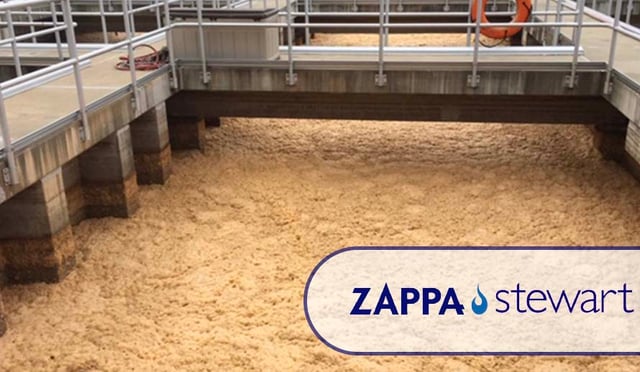 Industrial contractors utilize superabsorbent polymers (SAPs) in wastewater treatment, horizontal directional drilling (HDD), remediation, and other industrial sectors to simplify the solidification of challenging liquid waste streams. SAPs feature the highest absorbency of any solidification technology, allowing contractors to process more sludge with less reagent, minimizing the quantity of material mixed into the waste, time spent blending reagent, and the disposal weight of the solidified waste.
Industrial contractors utilize superabsorbent polymers (SAPs) in wastewater treatment, horizontal directional drilling (HDD), remediation, and other industrial sectors to simplify the solidification of challenging liquid waste streams. SAPs feature the highest absorbency of any solidification technology, allowing contractors to process more sludge with less reagent, minimizing the quantity of material mixed into the waste, time spent blending reagent, and the disposal weight of the solidified waste.
Why Does Sludge Need to be Solidified?
Wastewater and drinking water treatment facilities are often faced with the need to remove sludge from process vessels, such as aeration basins, digester tanks, and clarifiers for maintenance purposes. Once the sludge is removed, it usually must be transported and disposed of at a landfill or other disposal facility. However, due to the liquid content, sludge must be solidified before being hauled to the disposal facility. SAPs allow contractors to convert liquid sludge into dry, stackable solids that will pass the EPA’s Paint Filter Test in minutes. The solidified waste can then be transported in a standard dump truck to a landfill and disposed of as solid waste.
SAPs Basics: Absorbency and Liquid Retention
SAPs are made from cross-linked sodium polyacrylate, which is shipped to project sites as a dry, granular solid material. Once the SAPs particles contact water, they utilize their superior absorbency (200-350 lb of liquid per pound of SAPs) to draw large volumes of water into the SAPs’ structure, eliminating free liquid. A typical dosage rate for SAPs is approximately 0.5% - 1.5% (by weight).
Another key feature of SAPs is liquid retention. SAPs chemically retain water within the polymer structure, even under moderate pressures, which is advantageous for landfills and other disposal facilities that strive to minimize leachate volumes.
SAPs vs. Traditional Absorbents
Traditional absorbents, such as sawdust, waste fluff, and corn cobs, have much lower absorbency values than SAPs. Typical absorbencies for traditional absorbents range from 2 to 4 lb/lb. Remember, SAPs’ absorbencies can be up to 400 lb/lb. Because traditional absorbents are so inefficient, the required dosage rates for waste solidification can be as high as 100% - 200% (by weight). The large volumes of conventional absorbents required for solidification result in high project costs due to the extra time on-site mixing the media, material freight charges, and the excess weight of the reagent that must be transported and disposed of at a landfill.
Considering only transportation and disposal costs, savings from using SAPs vs. sawdust on a solidification project typically range from 20% to 60%. Also, traditional absorbents do not offer liquid retention capability like SAPs. Once sawdust, or other traditional absorbents, are placed in a landfill, the liquid will be released from the mass of waste material. The released waste fluid may seep out of the landfill into groundwater or surface water, or infiltrate the landfill’s leachate collection system, causing increased leachate management costs.. Furthermore, to mitigate increasing leachate management costs, many landfills have begun refusing liquids that have been “solidified” or “bulked” with traditional absorbents.
It’s as Easy as 1,2,3
- Determine sludge weight and SAPs dosage
- Mix SAPs into sludge with excavator or similar
- Load dump trucks with dry, stackable waste for landfill disposal
Benefits of Solidifying with SAPs
- Passes EPA Paint Filter Test
- Reduces disposal costs
- Minimizes waste bulk
- Eliminates costly transportation of liquids
- Minimizes reagent handling and mixing costs
- Safe to handle
- Safe for the environment
- Does not require special PPE
- Does not require special mixing equipment
In summary, sludge removal and disposal are significantly simplified by solidifying with superabsorbent polymers. SAPs require less manpower, materials, and transportation and can cut disposal costs by 20% to 60% compared to traditional absorbents.
Zappa Stewart provides industry-leading solidification reagents. Our technical consultants are available to assist you with product information to meet your waste management needs. Please contact us.
Download our white paper
"How to Prevent Being Fined by The EPA if Your Waste Leaks"






